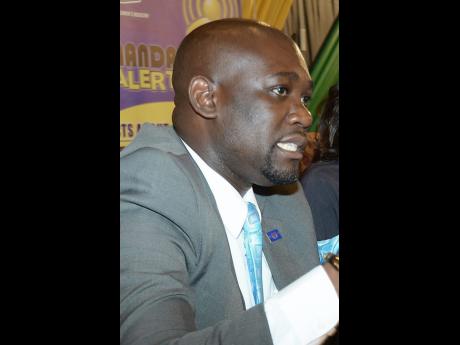Sexual predators continue to prey on underage youth
Underage youth in Jamaica continue to be the main targets of sexual predators, according to data obtained from the Office of the Children's Registry (OCR). Between 2007 and 2014, the OCR received 16,790 reports about children who were known, or suspected to have been, victims of sexual abuse.
Over the eight-year period, approximately two-thirds (10,989) of alleged victims of child sexual abuse were aged 13-17 years; 21.1 per cent (3,545) were aged 7-12 years; and 8.4 per cent (1,406) were under seven years; while the ages of 5.1 per cent (850) were unknown.
For the period, Kingston and St Andrew accounted for the majority of the reported cases of sexual abuse, with 5,301 - more than two times that of St Catherine, with 2,138, and St Ann (1,583).
When the data was disaggregated by sex, there was a notable disparity, with nine in every 10 children (93 per cent) reported to the OCR between 2007 and 2014 who were or at risk of being sexually abused being girls; 6.7 per cent were boys, and the sex of 0.3 per cent was not provided.
"Our young men, and more so our adult men, target these young girls for more than one reason," Superintendent of Police Enid Ross-Stewart, head of the Centre for Investigation of Sexual Offences and Child Abuse (CISOCA), told The Sunday Gleaner.
She explained that old myths such as the belief that having sex with young girls can cure sexually transmitted diseases, as well as some perverted men wanting to live out fantasies were some of the reasons for adolescent girls being targeted.
SOME GIRLS SEEK OUT OLDER MEN
On the other hand, the superintendent also pointed out that some young girls actually seek out sexual interaction with older men.
"With some of these girls, their hormones are raging very early, and because of what they see on the Internet and on TV, they are exposed, so they go after it too," Ross-Stewart pointed out, while warning, "but even if these girls or boys come after them (adults), they need to resist it, as they are the adults and should know better."
Registrar for the OCR, Greg Smith, believes girls are most vulnerable between ages 13 and 17, which he said is further highlighted by the fact that this cohort also accounts for the majority of the missing-person reports.
"From anecdotal information from discussions with some of these children, when you look at the 13-17 band of girls who go missing, the majority are because of the exploration of sexual activity," Smith said. "They would have had their so-called 'boyfriends' and so some of them would have gone off for a few hours, a few days or even a weekend and then engage in these activities."
As it relates to the increase in number of reported cases, head of the Child Development Agency, Rosalee Gage-Grey, believes that some of these adolescents might have been exposed to sexual abuse earlier, but with greater exposure and courage are finally able to speak out.
"We don't have any empirical evidence or data, and I think it is perhaps something that we need to explore further, but what we do recognise even from assessment and interviews with the children is that some of them would have been abused from earlier and probably now got the courage to report," Gage-Grey.
Collective effort needed
Hear the Children's Cry founder, Betty Ann Blaine, shared that persons are failing to make the distinction between children and adults and, therefore, adolescent girls need more protection.
"Teenage girls need special protection as they come into puberty and as they mature physiologically. For them to be protected requires a collective effort between the State, Government and broader society and, of course, what's happening at school," Blaine said.
"They are not getting the protection oftentimes in the homes because many of the perpetrators are in fact family members, so they are becoming attractive not only to people on the outside of their homes, but they become physically attractive to people who are their own family members. And so, the living conditions of a lot of these teenage girls are a problem."
Children's Advocate Diahann Gordon Harrison is also calling for more emphasis to be placed on identifying men who impregnate underage girls so that they can be brought to justice, as the young mothers often try to protect the identity of the fathers.
"It is almost routine where you will have a whole number of children who exist and who have birth certificates and there is no father's name on the birth certificates," Gordon Harrison highlighted.
"At the hospital level, we have to have persons disclose mandatorily who the father of the children are and tie that somehow with some consequence. It clearly can't be criminal consequence, but certainly, there has to be some kind of intervention at the hospitals."
* Number of sexual abuse reports received by the OCR by age group for 2007-2014
AGE GROUP TOTAL
Six years or less 1,406
7 - 12 years 3,545
13 - 17 years 10,989
Age unknown 850
TOTAL 16,790
* Number of reports of sexual abuse received by the OCR by parish of residence for 2007-2014
PARISH OF RESIDENCE REPORTS
Kingston & St Andrew 5, 301
St Catherine 2,138
Clarendon 1, 096
Manchester 1,117
St Elizabeth 694
Westmoreland 951
Hanover 423
St James 1,422
Trelawny 549
St Ann 1,583
St Mary 780
Portland 389
St Thomas 224
Abroad 4
Unknown 119
TOTAL 16,790





